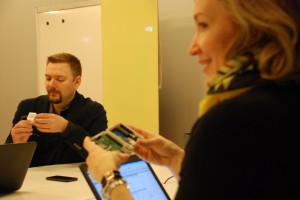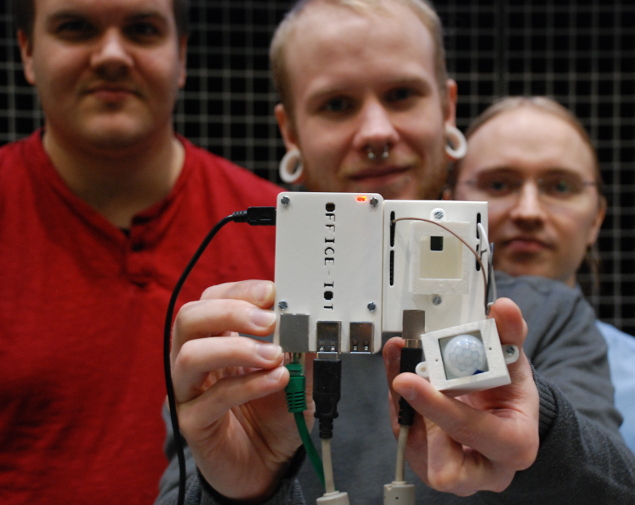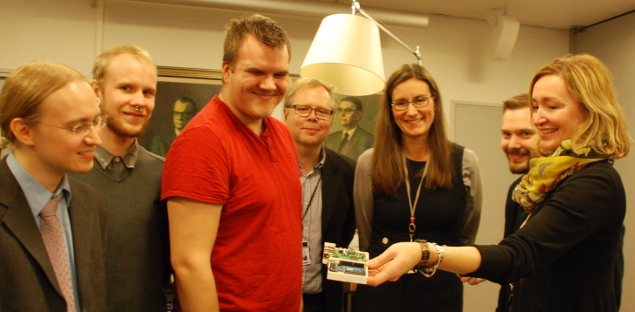My negotiation rooms are reserved, but is anyone actually there? What’s the utilization rate?
OfficeIOT project helps you. It senses if people are in the room and sends this information to a server in the cloud. Users can then log in with any web browser to see the room status.
OfficeIOT is a student project for Martela, on Haaga-Helia course Innovation Project.
Yes, you can have the source code and the 3D-printable models. The link is in the end. The project is a working prototype with initial tests done – it’s not production ready.
Martela Comments on OfficeIOT
 During the project, Martela provided their insight and use cases for the students. They were quite happy with the end result.
During the project, Martela provided their insight and use cases for the students. They were quite happy with the end result.
Mika Vuorelma (IT Infra Service Manager) is impressed with student work: “all of these different subsystems have been neatly packaged into this nice box”.
Juho Laine (Product Development Manager): “It combines the whole pipeline into the end product. From physical 3D-modeling, 3D-printing and electrical components to software running the whole thing, OfficeIOT integrates multiple technologies.”
Minna Andersson (Marketing and Responsibility Director) enjoyed following student progress. She summarized the end result “impressive”.
During the final meeting, we were surprised to find out that everyone seemed to know a lot about 3D-printing. Laine explained that that Martela uses 3D printed prototypes for all of their plastic parts. This makes the design process more agile and saves costs.
How Students Built OfficeIOT?
OfficeIOT dongle (in the negotiation room) has a passive infrared sensor, Arduino and Raspberry Pi in a 3D-printed case.
The dongle automatically sents room status (people in / nobody in) using http GET-requests. This connection can be protected with SSL if needed.
The server receives this data with PHP and stores it into a MySQL database. The server is normal Ubuntu server running LAMP stack. Testing server is a virtual server in Frankfurt.
Clients can use their password to connect to OfficeIOT web server. The user interface is a web service, so any operating system with a web browser can view it.
OfficeIOT took the “best tool for the job” approach, which resulted in a long list of technologies.
- Chassis: Blender, 3D-printing, ThingVerse (for development board base boxes)
- Arduino: C++
- Raspberry Pi: Python, Rasbian Linux, Python requests
- Server: cloud/virtualization, LAMP (Linux Apache MySQL PHP), PHP PDO, ssh
- Client side: HTML, CSS, Javascript. Mobile first coding.
- Publishing results: WordPress Blog, GitHub
- Version control: git
Read the story from OfficeIOT blog or download 3D-models and source code from OfficeIOT GitHub.
It was very nice for Martela to provide students (and me) their comments and ideas about offices of the future. After talking with them, office furniture will never look the same again.

